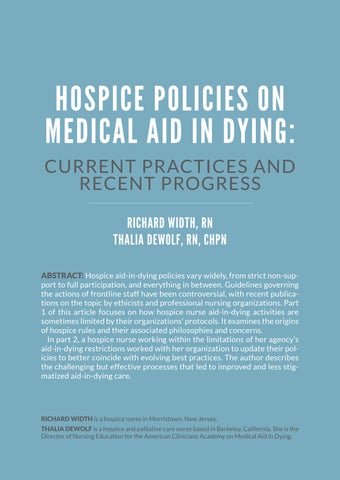HOSPICE POLICIES ON MEDICAL AID IN DYING: CURRENT PRACTICES AND RECENT PROGRESS RICHARD WIDTH, RN THALIA DEWOLF, RN, CHPN ABSTRACT: Hospice aid-in-dying policies vary widely, from strict non-support to full participation, and everything in between. Guidelines governing the actions of frontline staff have been controversial, with recent publications on the topic by ethicists and professional nursing organizations. Part 1 of this article focuses on how hospice nurse aid-in-dying activities are sometimes limited by their organizations’ protocols. It examines the origins of hospice rules and their associated philosophies and concerns. In part 2, a hospice nurse working within the limitations of her agency’s aid-in-dying restrictions worked with her organization to update their policies to better coincide with evolving best practices. The author describes the challenging but effective processes that led to improved and less stigmatized aid-in-dying care.
RICHARD WIDTH is a hospice nurse in Morristown, New Jersey. THALIA DEWOLF is a hospice and palliative care nurse based in Berkeley, California. She is the Director of Nursing Education for the American Clinicians Academy on Medical Aid in Dying.
40
